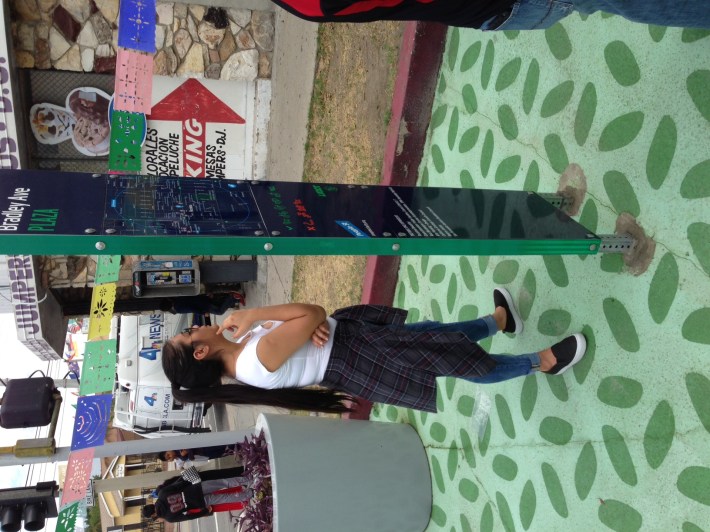If you drive to work, you can get a $230 monthly parking benefit, subsidized by the federal government and paid through your employer. If you take transit, right now you can get up to $230 per month, but the cap may revert to $120 when the current transit benefit law expires this fall. And if you ride a bike? If your employer can even figure out how the bike benefit works, you get twenty bucks. Don’t spend that all in one place, kiddo. (Full disclosure: even Streetsblog hasn’t worked through the confusing bureaucracy enough to give its bike-commuting staff this benefit.)
The privileged position of cars in the employer-benefits paradigm could soon change. As Rep. Jim Moran (D-VA) said today, “We need to take away subsidies that incentivize people to do just the opposite of what we ought to be doing.” As a congressman representing the second most congested part of the country, Moran said it was “stunning” that the tax code “is designed to subsidize congestion.”
Moran is a co-sponsor of Rep. Earl Blumenauer’s (D-OR) Commuter Relief Act, introduced today as a way to bring some equity to different transportation modes. Why should drivers get up to $230 a month to foster oil dependency, greenhouse gas emissions, and congestion when everyone else gets so much less?
Blumenauer’s proposal contains a menu of options that lawmakers can choose among – or they can choose all of them. They are:
- Transit equity: sets the cap for all transportation benefits at $200 a month – parking and transit.
- Self-employed extension of transportation benefits: gives self-employed workers transit benefits for their work travel.
- Parking cash-out: requires employers who offer a parking benefit to also offer the option to take cash instead (reducing the incentive to drive).
- Van-pool credit: creates a 10 percent tax credit for spending on vanpool services.
- Bike benefit: raises the cap for the bike benefit from $20 to $40 and makes the procedures easier for employers. It also allows commuters to combine the bike benefit with transit or parking benefits, which they’re now not allowed to do.
“What we need to do is to be able to help American commuters break the tyranny of the pump,” Blumenauer said today at a press conference at the Capitol South metro station outside the House of Representatives office buildings. He said the bill would give people choices to reduce their costs of commuting, but reminded his audience that long term, the challenge was to provide better transportation choices. One man standing behind Blumenauer held up a sign with the words “Going to work so I can pay to get to work” in a circle with a slash through it.
One of the innovations of Blumenauer’s bill is that it acknowledges that people get to work different ways different days. Under the current law, commuters need to choose a transit, parking, or bicycle benefit. In the new bill, they can mix and match. They can take the $40 bike benefit and also combine it with a $160 transit benefit, up to the $200 total cap.
The cash-out option is the key to allowing that kind of flexibility. Rather than forcing commuters into a rigid program of just driving or just taking transit, it can put $200 in their pockets for whatever transportation costs they encounter – whether it’s bus fare, parking, new tubes, or Gatorade for the long ride. The chart above, which parking expert Donald Shoup of UCLA printed on Streetsblog last fall, shows the power that a parking cash-out can have in shifting transportation choices.
Blumenauer asserts that the bill is deficit-neutral, since the small reduction in parking benefits makes up for the increase in other benefits. And he says that the benefits aren’t just a pat on the back for people already using transit and bicycles. From Blumenauer's office:
A recent study by Newsweek found that one in five employees changed how they commuted when their employer offered a commuter benefit program. Given that a three percent reduction in commuting trips results in a 39 percent decrease in congestion, reducing commuting trips during peak times, through vanpooling or transit, is one of the most efficient and cost effective ways to increase road capacity.
Not every automobile commuter gets monetary parking benefits, of course. Yes, in some dense, urban areas like New York or D.C., employers can directly help employees pay for parking in public lots. But in smaller cities and suburban areas, drivers can usually just pull right into the office lot for free. If a commuter wanted to “cash out” that parking benefit under the bill, experts say the IRS requires employers to quantify that in-kind payment to determine how much the cash equivalent would be.
Blumenauer gestured at a massive free parking lot for Capitol employees just behind the House office buildings.
“I invite you to think about how much it costs the federal government to provide free parking here to thousands of people on Capitol Hill,” Blumenauer said. “If we give commuters more choices, we will end up reducing the pressure. If we gave our employees here the choice of a transportation benefit to rent a space here or down the street or transit or cycling, we could cut the cost to the federal government of maintaining some of the most expensive real estate in Washington D.C. for all these people that are clogging the roads every day. Think of the uses for this expensive real estate.”









